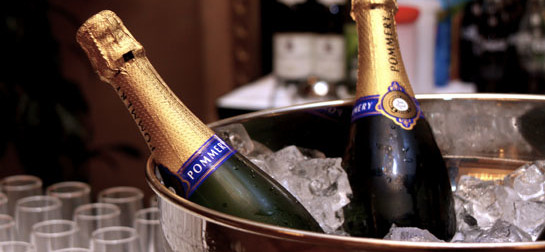If you own or operate a service or manufacturing business, one great way to show your leadership of your industry and in the local business community is to host an event. There are many benefits, little downside, and if successful it can be scaled up or down or repeated again and again.
There are some basic requirements for a successful event:
1) Guests! Getting enough participation by the right participants is key. Market the event extensively, but create exclusivity by sending actual paper invitations – not just an e-mail announcement of an open house. The invitation requests and begs an RSVP, so that you can get an accurate head count for food and beverage, space planning etc. You want the room to look full but not crowded, and you’d like current customers to mix and mingle with prospects, so they spread the word about the work you do for them.
2) Refreshments – This is a tough part for many people to get right. Gauging the amount, level and type of food and drink to serve a very diverse guest list can be difficult, but there are some guidelines to follow to make it easier.
a) Let the time of day for the event guide your choices. For afternoon events, light appetizers and soft drinks may be appropriate. For a after-hours cocktail event, more substantial appetizers and passed hors d’oeuvres and beer and wine selections might be more appropriate.
b) For a dinner event or awards presentation, a buffet style will facilitate networking, but a sit-down dinner will allow guests to be more comfortable for a longer period of time, and form fewer but closer relationships with table-mates. Get the highest quality food and most sophisticated beverage choices you can afford – these are your guests and customers, doubly important to let them know you care enough to serve the best.
c) Drinks – for open bars, plan on 2-3 drinks per person, average, and keep key brands of each spirit on hand, along with plenty of mixers. For gatherings of over 20 people, hire a professional bar tender, you don’t want your guests being over-served because your staff feels generous when pouring for their favorite customer. Keep plenty of ice on hand, about 2 lbs per person is a good rule of thumb.
3) Venue – if you are a manufacturing business, you have hard assets to show off – an open house type should include a “plant tour” of your production areas and equipment. Clean up extensively beforehand, remove trash, scrap and waste, remove any unused or non-functional equipment, sweep and mop floors, remove signage or decoration of questionable taste from walls, re-install any safety equipment, cover or hide proprietary customer work in progress. If you’re a service business, there may not be much of interest to show visitors, cubicles look the same pretty much everywhere. Consider having the event in your building lobby if it is impressive, or at a nearby hotel.
4) Entertainment – unless this is strictly an open house to greet customers, there should be some additional component to the event to warrant attendance by the guests. If you seek to be a thought leader in your industry or local business community, consider a brief presentation by your top management, including slides or video. Show off your new service or new capabilities, show your point of view and strengthen the reasons for your guests to work with you rather than your competitor. Another avenue to consider is to hold educational seminars, which would highlight how your firm provides solutions to well-known or recognized problems in your industry.
5) Amenities – make sure the guests feel welcome and thank them for their participation. The little things make a difference when creating an impression. A small parting gift, even if its a branded item (your brand, of course)is fine, but make it a high quality piece. Make sure there is a place to put coats if it’s in the winter, offer umbrella escorts from the parking lot if it’s raining, valet parking if you have a city location, and other niceties will make a big difference in the overall impression.
6) Follow Up – all the entertaining in the world won’t make your business grow (unless you’re a caterer) unless you connect with those prospects both at the event and afterward, when they are back in their own environment and in decision-making mode. A nice Thank You note to all attendees with a personal note in each will do the trick, along with a follow-up e-mail later that week, highlighting some of the advantages and benefits you presented them with at the event should help cement your company in the correct place in their mind for future.
Using events to promote your business and generate new customers is a time-honored tactic that works when you pay attention to the little details and you make it look easy. If you’re not comfortable with all this, maybe have a dry run for your staff a week before to work out the bugs before getting in front of customers. In general, quality will show you off to best advantage, so work with the best caterer, best beverage supplier, produce a high quality presentation with some production value and take advantage of the opportunity and follow up, and your business will grow before your eyes.
If you thought this was of value, and you’d like to learn more, subscribe to the blog and it will show up in your inbox weekly – FREE! Don’t forget to pick up your copy of “The Marketing Doctor’s Survival Notes”



